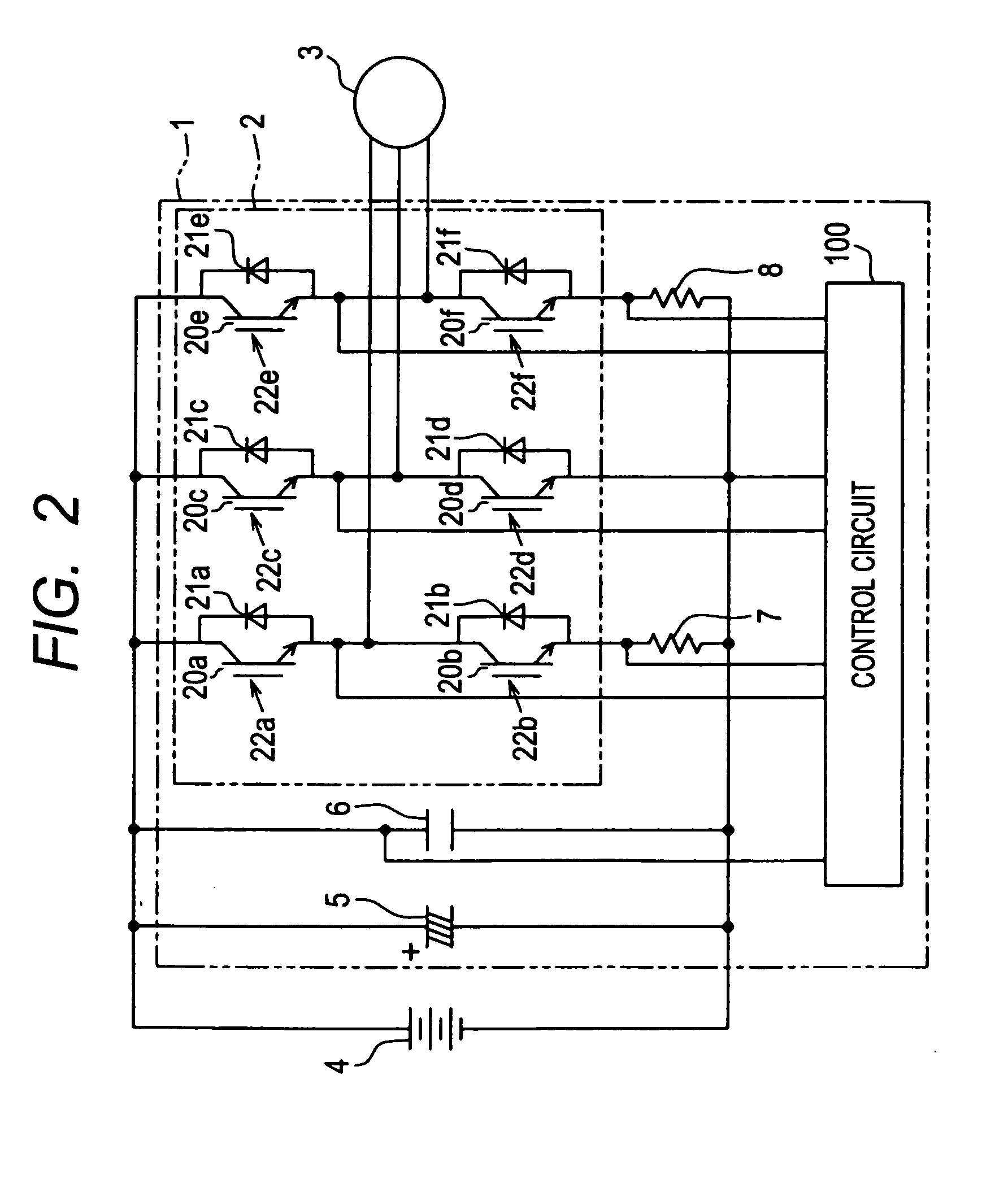Semiconductor apparatus having semiconductor module cooled by heat sinks which have increased strength together with increased thermal mass
- Summary
- Abstract
- Description
- Claims
- Application Information
AI Technical Summary
Benefits of technology
Problems solved by technology
Method used
Image
Examples
first embodiment
[0029]A first embodiment of a semiconductor apparatus will be described, which is suitable for use in an inverter apparatus for driving a high-power electric motor. The inverter apparatus serves to convert DC electrical power to AC power, and is typically a three-phase (U, V, W phases) inverter apparatus. The motor may be a drive motor of an electric vehicle that is powered by fuel cells such as is illustrated in the example of FIG. 1, or of a hybrid (gas / electric) vehicle.
[0030]In the conceptual diagram of FIG. 1, an inverter apparatus 1 which is installed in a vehicle incorporates a three-phase inverter circuit, which drives a motor 3 to provide motive power for the vehicle. FIG. 2 is a circuit diagram of the three-phase inverter circuit, which incorporates six semiconductor apparatuses each in accordance with a first embodiment of the invention, as described hereinafter.
[0031]As shown in FIG. 1, the inverter apparatus 1 is installed at the rear end of the vehicle, adjacent to a b...
second embodiment
[0076]A second embodiment of a semiconductor apparatus will be described referring to FIG. 8, which shows an inverter circuit unit 30A having identical functions and operation to those of the inverter circuit unit 30 described above. In FIG. 8, each of respective semiconductor apparatuses 10A differs from the semiconductor apparatus 10 of the first embodiment only in that an aperture (with this embodiment, a through-hole 114) extending in the thickness direction Y is formed in one of the secondary fins 113 of one of the heat sinks 11 of the semiconductor apparatus 10A. Specifically, for each semiconductor apparatus 10A, the through-hole 114 is formed in one of the secondary fins 113 (i.e., in one of the pair of fins which contact the lower inner face of the case 31A). The lower inner face case 31A of the case 31 of the 30ax is formed with an array of protrusions 38 (each extending in the thickness direction Y). The respective positions of the protrusions 38, and the dimensions of ea...
third embodiment
[0078]A third embodiment of a semiconductor apparatus will be described referring to FIG. 9, which shows an inverter circuit unit 30B having identical functions and operation to those of the inverter circuit unit 30 described above. In FIG. 9, each of respective semiconductor apparatuses 10B differs from the semiconductor apparatus 10 of the first embodiment only in that a threaded hole 115 (extending in the thickness direction Y) is formed in one of the secondary fins 113 of one of the heat sinks 11 of the semiconductor apparatus 10B, with the holes being threaded in correspondence with a set of screws 60. Specifically, for each semiconductor apparatus 10B, the threaded hole 115 is formed in one of the pair of secondary fins 113 of that semiconductor apparatus 10B which each become placed in contact with the lid 37B when the inverter circuit unit 30A is assembled. Six through-holes (each extending in the thickness direction Y) are provided in the lid 37B. The respective positions o...
PUM
 Login to View More
Login to View More Abstract
Description
Claims
Application Information
 Login to View More
Login to View More - R&D
- Intellectual Property
- Life Sciences
- Materials
- Tech Scout
- Unparalleled Data Quality
- Higher Quality Content
- 60% Fewer Hallucinations
Browse by: Latest US Patents, China's latest patents, Technical Efficacy Thesaurus, Application Domain, Technology Topic, Popular Technical Reports.
© 2025 PatSnap. All rights reserved.Legal|Privacy policy|Modern Slavery Act Transparency Statement|Sitemap|About US| Contact US: help@patsnap.com



